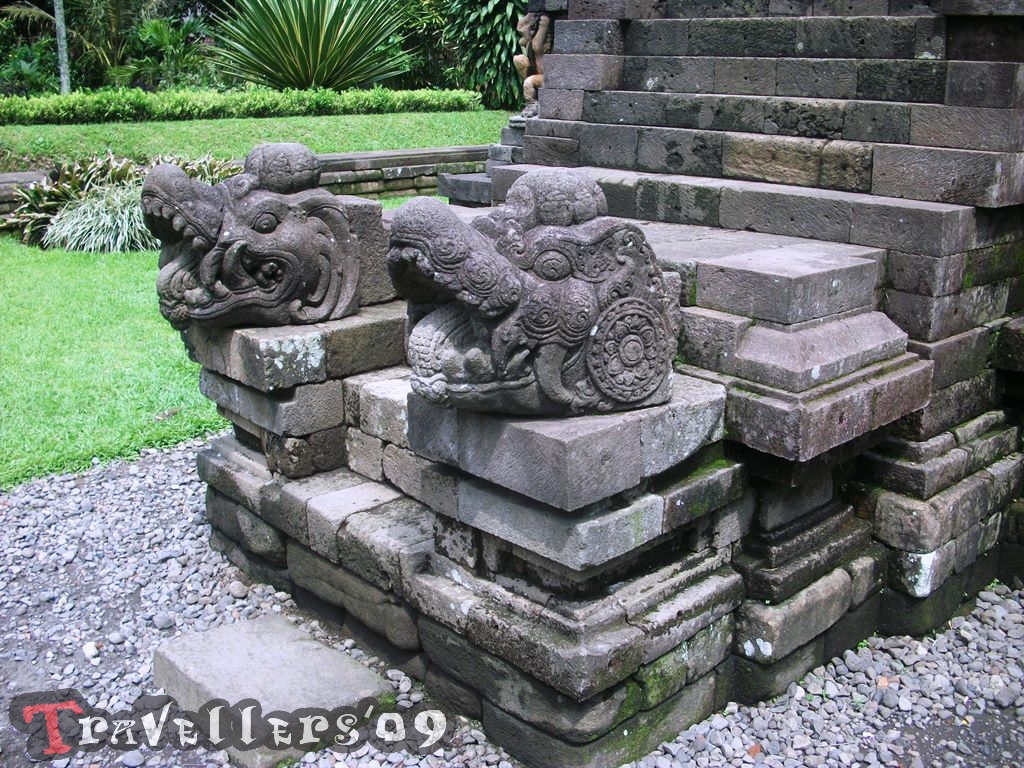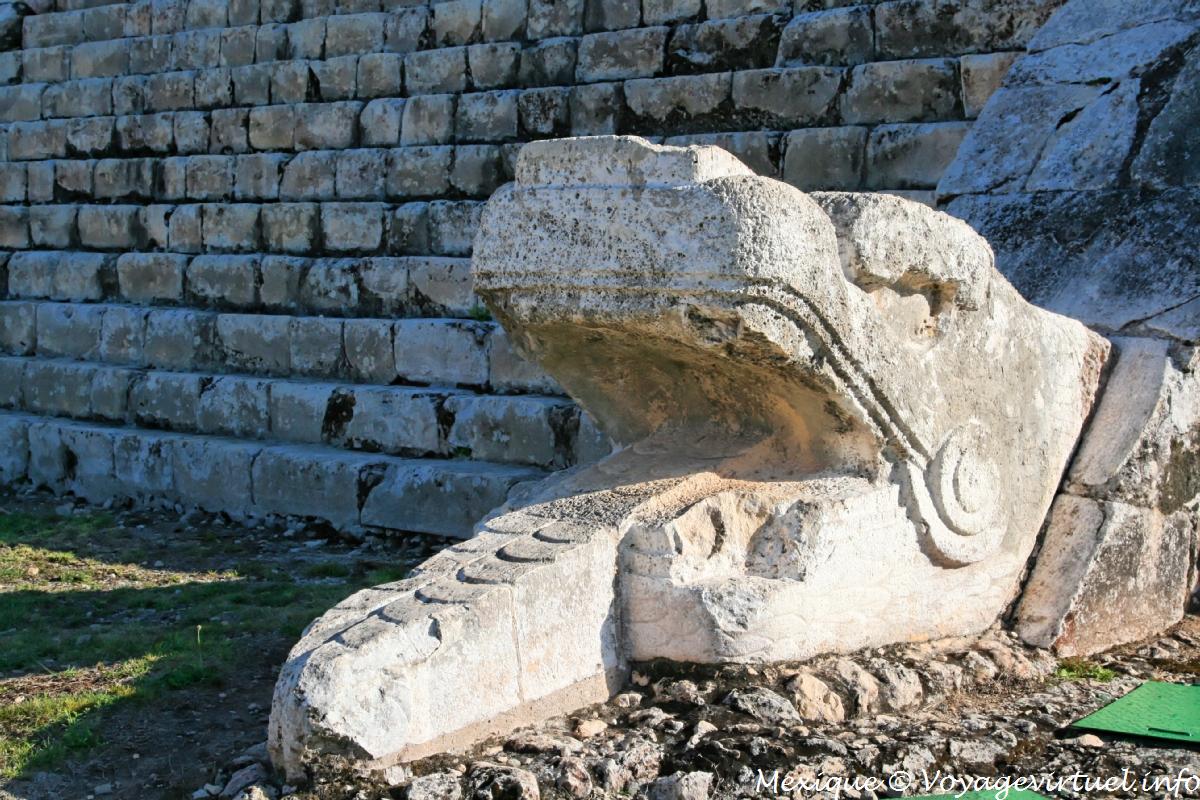It looks like you're using an Ad Blocker.
Please white-list or disable AboveTopSecret.com in your ad-blocking tool.
Thank you.
Some features of ATS will be disabled while you continue to use an ad-blocker.
24
share:
Did ancient Easter
Islanders have friends from afar? Yes, say scientists. (+video)
The study suggests that ancient Polynesians on Easter Island had interbred with Native South Americans between 1300 AD and 1500 AD, long before Europeans reached the island in 1722.
Additional links:
Epic pre-Columbian voyage suggested by genes
Genomic data support early contact between Easter Island and Americas
Easter Island Inhabitants Had Contact with South Americans in 1300-1500
Easter Island is one of the most remote islands in the world, it's 1,200 miles of open ocean just to Pitcairn Island (famous for the HMS Bounty mutineers), and it's 2,200 miles to the nearest continental landing point in Chile. If open-rigger canoes can make it this far, then it raises some interesting possibilities of pacific-contact between the ancient Olmec and Shang dynasty.
Geneticists found in a new study that ancient inhabitants of Easter Island met and mated with Native Americans long before Westerners arrived.
The study suggests that ancient Polynesians on Easter Island had interbred with Native South Americans between 1300 AD and 1500 AD, long before Europeans reached the island in 1722.
The genetic evidence indicates either that Rapa Nui people traveled to South America or that Native Americans journeyed to Easter Island. The researchers said it probably was the Rapa Nui people making the arduous ocean round trips.
"It seems most likely that they voyaged from Rapa Nui to South America and brought South Americans back to Rapa Nui and admixed with them," said Mark Stoneking, a geneticist withGermany's Max Planck Institute for Evolutionary Anthropology...
Additional links:
Epic pre-Columbian voyage suggested by genes
Genomic data support early contact between Easter Island and Americas
Easter Island Inhabitants Had Contact with South Americans in 1300-1500
While it may have taken weeks for Rapanui to reach even the closest nearby islands, there are hints of their early contact with South Americans.
For example, there is evidence for the presence of plants native to the Americas on Easter Island, including sweet potato and bottle gourd, long before the European discovery of the island.
Now a genome-wide analysis of 27 native Rapanui confirms that the island people made contact with Native South Americans 19 to 23 generations ago, sometime between AD 1280 and 1495.
The lead author of the study, Dr Anna-Sapfo Malaspinas of the Natural History Museum of Denmark in Copenhagen, suggests one of two scenarios: either South Americans sailed to the island or Rapanui travelers sailed to the continent and back.
Easter Island is one of the most remote islands in the world, it's 1,200 miles of open ocean just to Pitcairn Island (famous for the HMS Bounty mutineers), and it's 2,200 miles to the nearest continental landing point in Chile. If open-rigger canoes can make it this far, then it raises some interesting possibilities of pacific-contact between the ancient Olmec and Shang dynasty.
If the Native Americans were capable of travelling to Easter Island, the natives would never have ran out of resources. If on the other hand, they cut
down all the trees to make boats and ran out of wood, they would be in deep trouble. Which they did end up in.
edit on 24-10-2014 by stormcell
because: (no reason given)
a reply to: Blackmarketeer
This is really big news! I was 100% convinced the Polynesians had successfully traveled to South America years ago when I read about the introduction of yams into Polynesia (which btw occurred hundreds of years before this apparent interbreeding).
The Polynesians were certainly not afraid of a little open water.
EDIT:
Here's an article at the NPR site about the yams.
This is really big news! I was 100% convinced the Polynesians had successfully traveled to South America years ago when I read about the introduction of yams into Polynesia (which btw occurred hundreds of years before this apparent interbreeding).
The Polynesians were certainly not afraid of a little open water.
EDIT:
Here's an article at the NPR site about the yams.
edit on 2014-10-24 by theantediluvian because: (no reason given)
a reply to: Blackmarketeer
Lovely news. I've been a supporter of the idea that Polynesians pushed on but so far the evidence has been sketchy. This is a bit better but still no absolutely conclusive. The first archaeological book I read was Thor H's Aku Aku - but I always thought it far more likely that the Polynesian did the movement and not the SA.
The reason
Yep - there is skeletal material from RN so let us hope the research can be done, I'm unsure of how much of that material is pre-European contact however
Lovely news. I've been a supporter of the idea that Polynesians pushed on but so far the evidence has been sketchy. This is a bit better but still no absolutely conclusive. The first archaeological book I read was Thor H's Aku Aku - but I always thought it far more likely that the Polynesian did the movement and not the SA.
The reason
We need ancient DNA from skeletal evidence—not modern evidence—to resolve this question.
Yep - there is skeletal material from RN so let us hope the research can be done, I'm unsure of how much of that material is pre-European contact however
Polynesians clearly had the skills to travel such a great distance and successfully navigate to other islands, but that is still an impressive feat to
reach the Americas.
Polynesia's Genius Navigators
Polynesia's Genius Navigators
I believe that it was proven along time ago with the original Kon Tiki expedition. To start seeing further evidence of Polynesian and South American
interaction is great.
www.kon-tiki.no...
www.kon-tiki.no...
originally posted by: TheSpanishArcher
a reply to: Hanslune
I might be having a moment of denseness but I can't figure out what the RN stands for in that last sentence.
I might need to get that facepalm picture loaded up for the answer.
Sorry, Rapa Nui what the natives call Easter Island
a reply to: Blackmarketeer
Another potential facepalm moment:
Well, they made it to Rapa Nui in the first place...
Another potential facepalm moment:
If open-rigger canoes can make it this far...
Well, they made it to Rapa Nui in the first place...
a reply to: theantediluvian
That is a little inconvenient, isn't it? The Hawaiians, if you follow the mainstream timeline, arrived in the islands around a thousand years ago, with the sweet potato already in their kit.
The bottle gourd passed from NA to Asia much much earlier, as it was already in the eastern Polynesian kit when they show up and move sw into former lapita islands.
The dating also puts the contact during ths period when society on raps nui was collapsing. By that time they didn't have the trees to build canoes anymore, so it wasn't people from sa that made the voyage out there. The other polynesians had stopped going out there during the same time.
I read about the introduction of yams into Polynesia (which btw occurred hundreds of years before this apparent interbreeding).
That is a little inconvenient, isn't it? The Hawaiians, if you follow the mainstream timeline, arrived in the islands around a thousand years ago, with the sweet potato already in their kit.
The bottle gourd passed from NA to Asia much much earlier, as it was already in the eastern Polynesian kit when they show up and move sw into former lapita islands.
The dating also puts the contact during ths period when society on raps nui was collapsing. By that time they didn't have the trees to build canoes anymore, so it wasn't people from sa that made the voyage out there. The other polynesians had stopped going out there during the same time.
a reply to: Blackmarketeer
I do think we need to stop thinking of ancient peoples as though they could only travel as far as they could row. I don 't doubt people travelled vast distances over the sea and land because there are traces of a huge culture that existed world wide with the knowledge of pyramid building and the alignments of the cosmos.
The only whisper we have is from the bible where it glibly tells us that the world was fully populated. Unless people were travelling all over the world, the little ME world of the bible would not have been aware of that fact. Neither would the fact that we all spoke a similar language and could understand ourselves have been known. We know that also because God, in his annoyance presumably at the noise we collectively made, had to separate us and broke our communication between ourselves and our distant cousins.
We are in a world where a number of people believe the bible and another number disbelieve it, however by picking these two bits of information that relate to before a flood - which never happened - and we all use as a bench mark in time - although we can't quite date it (as it never happened) we do have those two points which tell us of a time when people populated all the world and travelled and were very skilled at it, especially the people living in the southern hemisphere who could tell if an island were over the horizen purely by the way the waves lapped against their canoes. Skills we may either have forgotten or may not have needed to acquire. We also know that the native Australian peoples navigated across a very challenging landscape and met with others without any kind of bush telegraph. We have two examples of people who navigated easily well beyond our skills were we without our technology today, so why should we be surprised or douobt their abilities?
I do think we need to stop thinking of ancient peoples as though they could only travel as far as they could row. I don 't doubt people travelled vast distances over the sea and land because there are traces of a huge culture that existed world wide with the knowledge of pyramid building and the alignments of the cosmos.
The only whisper we have is from the bible where it glibly tells us that the world was fully populated. Unless people were travelling all over the world, the little ME world of the bible would not have been aware of that fact. Neither would the fact that we all spoke a similar language and could understand ourselves have been known. We know that also because God, in his annoyance presumably at the noise we collectively made, had to separate us and broke our communication between ourselves and our distant cousins.
We are in a world where a number of people believe the bible and another number disbelieve it, however by picking these two bits of information that relate to before a flood - which never happened - and we all use as a bench mark in time - although we can't quite date it (as it never happened) we do have those two points which tell us of a time when people populated all the world and travelled and were very skilled at it, especially the people living in the southern hemisphere who could tell if an island were over the horizen purely by the way the waves lapped against their canoes. Skills we may either have forgotten or may not have needed to acquire. We also know that the native Australian peoples navigated across a very challenging landscape and met with others without any kind of bush telegraph. We have two examples of people who navigated easily well beyond our skills were we without our technology today, so why should we be surprised or douobt their abilities?
a reply to: Blackmarketeer
Not surprising, we do not know half of the history of the america's, when columbus reached the island he called Hispaniola, now Haiti he recorded masted recorded ships or balsa rafts as large as his own trading with the island, they were from south america, then there is the whole cocain and tobacco egyptian mummys scandal which is not solved no matter what you might be told so where they plying trade accross the atlantic with the west coast of africa or even more unlikly but not impossible were they trading accross the pacific.
Of course the Chinese knew something as they created the grand fleet, a massive fleet of Junk's far larger than anything until the age of the Galleon and maybe even larger than them, they sailed on a mission of discovery and suspected chinese Sea anchors have been found off the californian coast though I have no idea of the validity of that claim.
afe.easia.columbia.edu...
www.basicrps.com...
Then there is the mystery of poanape island with it's massive corral stone city's, one sunken and a later one built higher which may imply a global trade long before the europeans got involved or tried to rewrite history in there image.
Not surprising, we do not know half of the history of the america's, when columbus reached the island he called Hispaniola, now Haiti he recorded masted recorded ships or balsa rafts as large as his own trading with the island, they were from south america, then there is the whole cocain and tobacco egyptian mummys scandal which is not solved no matter what you might be told so where they plying trade accross the atlantic with the west coast of africa or even more unlikly but not impossible were they trading accross the pacific.
Of course the Chinese knew something as they created the grand fleet, a massive fleet of Junk's far larger than anything until the age of the Galleon and maybe even larger than them, they sailed on a mission of discovery and suspected chinese Sea anchors have been found off the californian coast though I have no idea of the validity of that claim.
afe.easia.columbia.edu...
www.basicrps.com...
Then there is the mystery of poanape island with it's massive corral stone city's, one sunken and a later one built higher which may imply a global trade long before the europeans got involved or tried to rewrite history in there image.
edit on 25-10-2014 by LABTECH767 because: (no reason
given)
originally posted by: Shiloh7
a reply to: Blackmarketeer
I do think we need to stop thinking of ancient peoples as though they could only travel as far as they could row. I don 't doubt people travelled vast distances over the sea and land because there are traces of a huge culture that existed world wide with the knowledge of pyramid building and the alignments of the cosmos.
However, there are no such traces, what you have are civilizations at different times who built pyramids for different reasons, often thousands of years apart
The only whisper we have is from the bible where it glibly tells us that the world was fully populated. Unless people were travelling all over the world, the little ME world of the bible would not have been aware of that fact. Neither would the fact that we all spoke a similar language and could understand ourselves have been known. We know that also because God, in his annoyance presumably at the noise we collectively made, had to separate us and broke our communication between ourselves and our distant cousins.
The people who wrote the bible had a very limited range of knowledge about the world. Based on what we know now different language evolved tens of thousands of years before the Bible. Also if you think that God exists; you have an ultimately powerful being with foresight of the future knowing when he created humans that they create one language and he would contradict himself and separate the languages - rather a silly procedure.
We are in a world where a number of people believe the bible and another number disbelieve it, however by picking these two bits of information that relate to before a flood - which never happened - and we all use as a bench mark in time - although we can't quite date it (as it never happened) we do have those two points which tell us of a time when people populated all the world and travelled and were very skilled at it, especially the people living in the southern hemisphere who could tell if an island were over the horizen purely by the way the waves lapped against their canoes. Skills we may either have forgotten or may not have needed to acquire. We also know that the native Australian peoples navigated across a very challenging landscape and met with others without any kind of bush telegraph. We have two examples of people who navigated easily well beyond our skills were we without our technology today, so why should we be surprised or douobt their abilities?
Take anything from the Bible with a grain of salt the size of Gibraltar, remember they had a very limited view of the world when they were making up the stuff they wrote about.
Much of the Polynesian knowledge was remembered and saved which allowed that science to be recreated:
Polynesian voyaging
The big challenge with long voyages over the sea are crew exhaustion, food that will not spoil, navigation and fresh water plus the effect of salt water on wooden ships (especially in warm seas). Challenges the Europeans had problems with too and would have difficulty overcoming.
originally posted by: LABTECH767
Not surprising, we do not know half of the history of the america's, when columbus reached the island he called Hispaniola, now Haiti he recorded masted recorded ships or balsa rafts as large as his own trading with the island, they were from south america, then there is the whole cocain and tobacco egyptian mummys scandal which is not solved no matter what you might be told so where they plying trade accross the atlantic with the west coast of africa or even more unlikly but not impossible were they trading accross the pacific.
You might find this book of interest then: Jack D. Forbes. The American Discovery of Europe. Urbana: University of Illinois Press, 2007. 272 pp. $34.95 (cloth), ISBN 978-0-252-03152-6.
Book on native American navigators before Columbus
The Cocaine and tobacco thing was debunked many years ago.
Of course the Chinese knew something as they created the grand fleet, a massive fleet of Junk's far larger than anything until the age of the Galleon and maybe even larger than them, they sailed on a mission of discovery and suspected chinese Sea anchors have been found off the californian coast though I have no idea of the validity of that claim.
They did sail and left records of where they went, they didn't go to CA and those anchors have been shown to be modern and made by immigrant Chinese fisherman in the 19th century.
Then there is the mystery of poanape island with it's massive corral stone city's, one sunken and a later one built higher which may imply a global trade long before the europeans got involved or tried to rewrite history in there image.
While an impressive piece of work the city doesn't hold (AFAIK) any evidence of 'global trade'. What are you basing that on?
edit on 25/10/14
by Hanslune because: (no reason given)
This new study backs up this one from two years ago
anthropogenesis.kinshipstudies.org...
and
In conclusion,
And this work suggests that "polynesians" are a multi ethnic group, and it shows a divergence in polynesian rats, those from Ne Polynesia are not related to those from west Polynesia.
How could this be if Polynesia was settled from the west?
lens.auckland.ac.nz...
anthropogenesis.kinshipstudies.org...
The Polynesian Gene Pool: An Early Contribution by Amerindians to Easter Island
Erik Thorsby
Abstract. It is now generally accepted that Polynesia was first settled by peoples from southeast Asia. An alternative that eastern parts of Polynesia were first inhabited by Amerindians has found little support. There are, however, many indications of a ‘prehistoric’ (i.e. before Polynesia was discovered by Europeans) contact between Polynesia and the Americas, but genetic evidence of a prehistoric Amerindian contribution to the Polynesian gene pool has been lacking.
and
The HLA investigations revealed, however, that some individuals also carried HLA alleles which have previously almost only been found in Amerindians. We could trace the introduction of these Amerindian alleles to before the Peruvian slave trades, i.e. before the 1860s, and provide suggestive evidence that they were introduced already in prehistoric time. Our results demonstrate an early Amerindian contribution to the Polynesian gene pool on Easter Island, and illustrate the usefulness of typing for immunogenetic markers such as HLA to complement mtDNA and Y chromosome analyses in anthropological investigations
rstb.royalsocietypublishing.org...
In conclusion,
Thorsby offers a better explanation: in accordance with the findings of chicken remains with Polynesian mtDNA in El Arenal, southern Chile and the suggestive evidence of pre-Columbian Polynesian ancestry in Mocha Island, Chile, he writes, “…There is strong evidence that Polynesians had been in South America early, i.e. in pre-Columbian time. After having arrived in South America, some of them may have returned to Polynesia, including Easter Island, not only taking the sweet potato and bottle gourd, etc., but also some native Americans with them.”
And this work suggests that "polynesians" are a multi ethnic group, and it shows a divergence in polynesian rats, those from Ne Polynesia are not related to those from west Polynesia.
How could this be if Polynesia was settled from the west?
lens.auckland.ac.nz...
edit on 25-10-2014 by punkinworks10 because: (no reason given)
a reply to: Hanslune
Simply the size and estimates of how many people it took to build (though that is assuming it was built in one go so it may have been built up by a smaller population over a longer period), the size posited by many theorists for the population requirement would require a larger island to sustain a population large enough to either build or fully inhabit the site according to there estimates, of course natural subsidance of the island may have accounted for a reduction in land area as well as explain the now submerged twin (or area) of the city under water adjacent to the site.
My spelling was off it is "pohnapei", the ruins of nan madol.
There is plenty on the net about it,
www.ancient-wisdom.co.uk...
en.mackerle.cz...
Of course being part Maori I can say with some pride the polynesian people were perhaps the best sailors the world has ever known getting around the pacific in small canoe's not large ship's, could they have not only found america (A definite probability) but also have traded from there to pacific island's, perhaps a small tribe settled the shore's of america then got driven back into the sea by more fearsome people's bringing the legacy of the america's with them.
And just for fun
www.beforeus.com...
Simply the size and estimates of how many people it took to build (though that is assuming it was built in one go so it may have been built up by a smaller population over a longer period), the size posited by many theorists for the population requirement would require a larger island to sustain a population large enough to either build or fully inhabit the site according to there estimates, of course natural subsidance of the island may have accounted for a reduction in land area as well as explain the now submerged twin (or area) of the city under water adjacent to the site.
My spelling was off it is "pohnapei", the ruins of nan madol.
There is plenty on the net about it,
www.ancient-wisdom.co.uk...
en.mackerle.cz...
Of course being part Maori I can say with some pride the polynesian people were perhaps the best sailors the world has ever known getting around the pacific in small canoe's not large ship's, could they have not only found america (A definite probability) but also have traded from there to pacific island's, perhaps a small tribe settled the shore's of america then got driven back into the sea by more fearsome people's bringing the legacy of the america's with them.
And just for fun
www.beforeus.com...
I just came across this little gem on the net. Pictures are truly worth many words, I'll leave them here for further thought. The Sukuh Temple of
Indonesia, in Java.




I think the Maya had far reaching influence way beyond Easter Island. This site is dated about 1300-1500 AD.
Also from a different temple in Java called Candi Kidal Temple,

Below is Chichen Itza Kukulkan for comparison,

Enjoy.




I think the Maya had far reaching influence way beyond Easter Island. This site is dated about 1300-1500 AD.
Also from a different temple in Java called Candi Kidal Temple,

Below is Chichen Itza Kukulkan for comparison,

Enjoy.
edit on 27-10-2014 by weirdguy because: (no reason given)
new topics
-
We need less laws in the UK not more
General Chit Chat: 1 hours ago -
The Baloney aka BS Detection Kit
Social Issues and Civil Unrest: 7 hours ago -
Suspected Iranian agent working for Pentagon while U.S. coordinated defense of Israel
US Political Madness: 7 hours ago -
How does my computer know
Education and Media: 10 hours ago
top topics
-
Suspected Iranian agent working for Pentagon while U.S. coordinated defense of Israel
US Political Madness: 7 hours ago, 13 flags -
USO 10 miles west of caladesi island, Clearwater beach Florida
Aliens and UFOs: 14 hours ago, 9 flags -
The Baloney aka BS Detection Kit
Social Issues and Civil Unrest: 7 hours ago, 5 flags -
How does my computer know
Education and Media: 10 hours ago, 3 flags -
We need less laws in the UK not more
General Chit Chat: 1 hours ago, 2 flags
active topics
-
Running Through Idiot Protestors Who Block The Road
Rant • 59 • : DBCowboy -
It has begun... Iran begins attack on Israel, launches tons of drones towards the country
World War Three • 645 • : YourFaceAgain -
The Baloney aka BS Detection Kit
Social Issues and Civil Unrest • 6 • : nugget1 -
President BIDEN Warned IRAN Not to Attack ISRAEL - Iran Responded with a Military Attack on Israel.
World War Three • 41 • : gortex -
Abortions in first 12 weeks should be legalised in Germany, commission says
Medical Issues & Conspiracies • 14 • : Consvoli -
We need less laws in the UK not more
General Chit Chat • 3 • : dothedew -
Afterlife, unknown, so prepare, or just go into the unknown (bad)!!
ATS Skunk Works • 54 • : Kennyb75 -
-@TH3WH17ERABB17- -Q- ---TIME TO SHOW THE WORLD--- -Part- --44--
Dissecting Disinformation • 478 • : cherokeetroy -
Suspected Iranian agent working for Pentagon while U.S. coordinated defense of Israel
US Political Madness • 14 • : YourFaceAgain -
Israel ufo shoot down drones?
Aliens and UFOs • 21 • : Asher47
24

